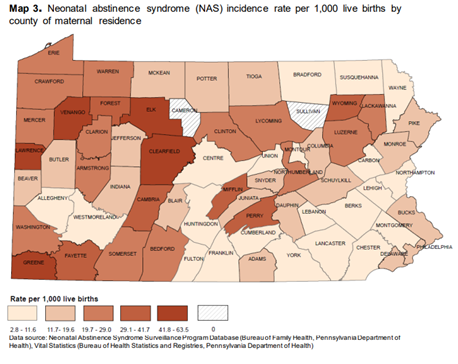Substance Exposed Newborn (SEN)/Neonatal Abstinence Syndrome (NAS)
The incidence of Neonatal Abstinence Syndrome (NAS) increased from 11.9 NAS cases per 1,000 live births in 2019 to 14.0 in 2020. At that time, nearly 91% of newborns with NAS remained in the hospital for 4 to 7 days or longer. Additionally, NICU admissions were significantly higher for newborns with substance exposure.
Recent studies and practices such as the Eat-Sleep-Console methodm, as well as other non-pharmacological interventions, have demonstrated that pharmacological interventions can be reduced while giving parents skills and confidence to care for their baby before leaving the hospital. Since 78% of newborns with NAS are discharged with their parents, this is especially important.
This also highlights the importance of referral and discharge planning, such as Plans of Safe Care. The PA PQC Substance-Exposed Newborn initiative is designed to support these recommendations. (PA DOH, 2022)


